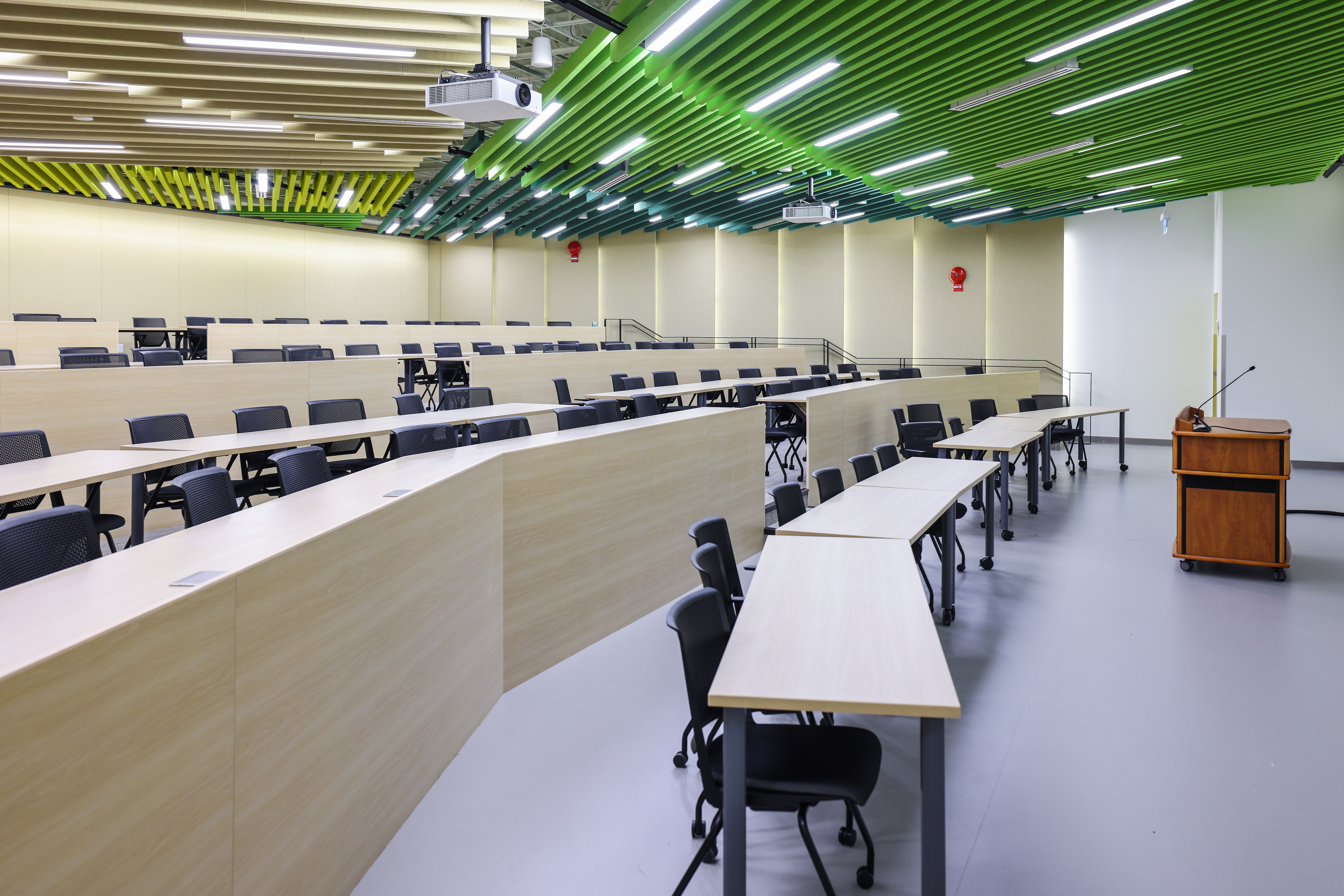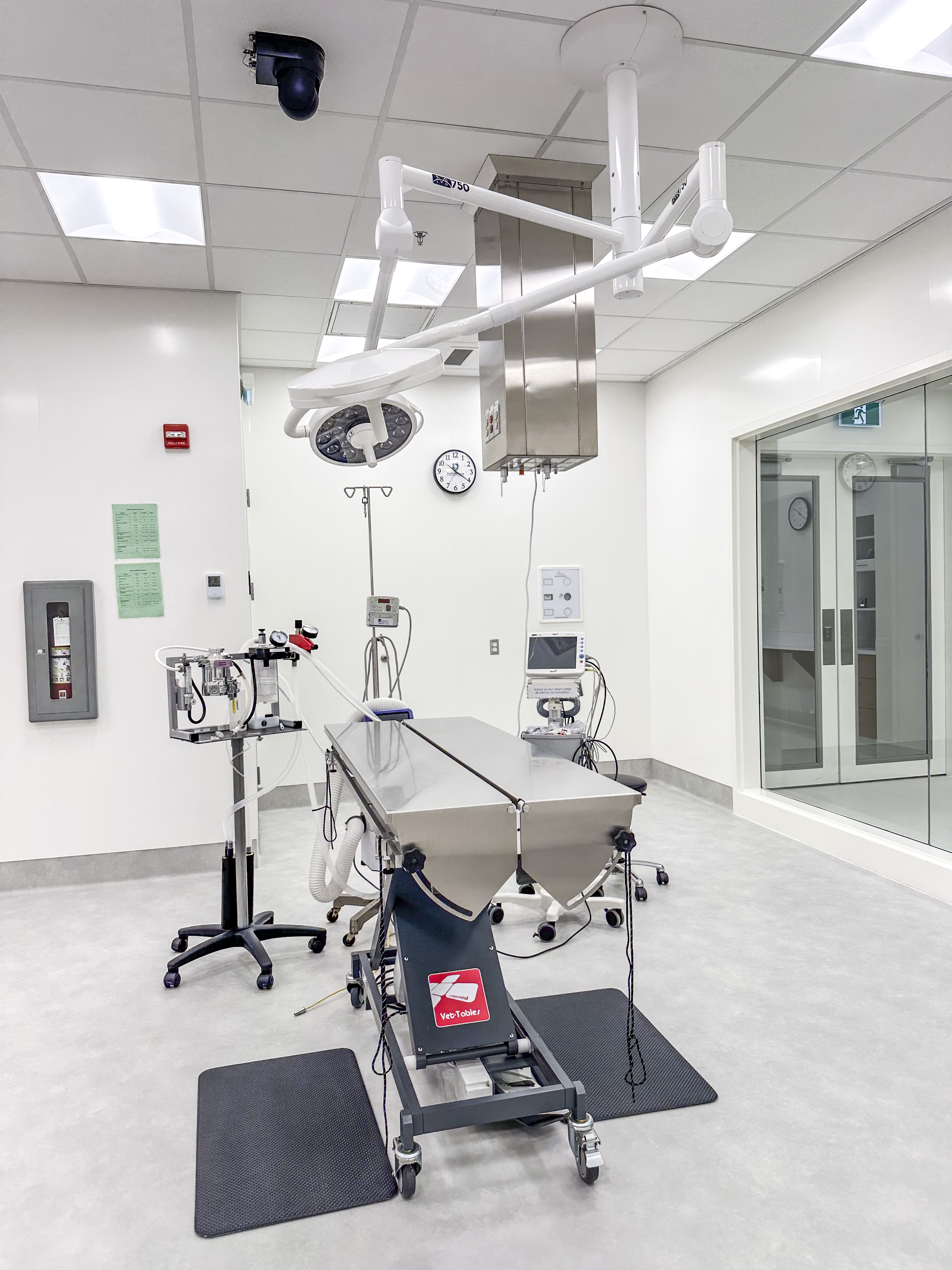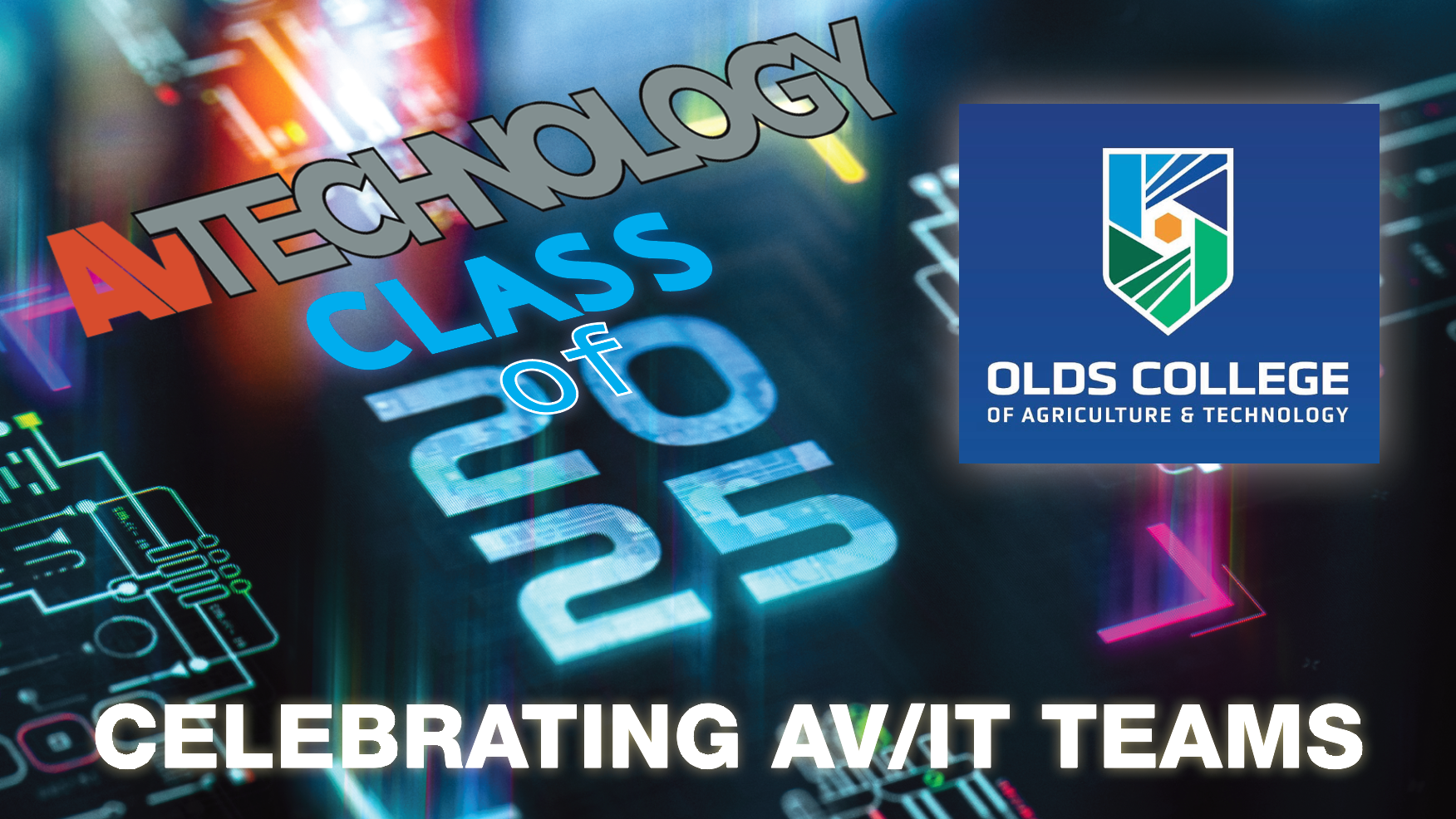AV/IT TEAM:
Joe Guenther, Information Technology director; Danny Belanger, Information Technology team member

GOALS: The new Animal Health Education Centre (AHEC) at Olds College houses specialized rooms for animal treatment and student learning, as well as classrooms with network connectivity for remote participation and more flexible presentation options. Complementing the new facility expansion is an animal hospital with surgical, dental, and radiology suites, plus diagnostic labs and an animal housing space. The goal of a partnership with integrator Applied Electronics LTD was to outfit this new space with state-of-the-art audiovisual technology.
CHALLENGES: The biggest challenge for the Olds College team was finding a solution that would enhance the interactive and collaborative learning environment for students. The technology would need to support classrooms with connectivity for remote participation and presentation options; as well as serve specialized treatment rooms with cameras and displays to allow more students to observe procedures, thereby increasing student capacity.

Sony Professional: Sony Pro BRAVIA BZ30L displays, Sony SRG-X400 4K NDI cameras, SonyVPL-FHZ80 projectors
FINAL INSTALL/USER BENEFITS: The team ultimately selected Sony Pro BRAVIA BZ30L displays, SRG-X400 4K NDI cameras, and VPL-FHZ80 projectors for installation in classrooms and labs for remote viewing and recording of surgical procedures and lectures.
In the Werklund Agriculture and Technology Center, a completely renovated building, the Sony displays and projectors support classroom presentations and collaborative discussions. Additional displays are used for break-out meeting rooms and digital signage throughout the building. A dozen projectors are installed across both buildings, with more than 20 displays in 70- and 75-inch sizes and 10 cameras.
“We’re capable of doing so much more now in terms of classroom presentation, viewing flexibility, network connectivity, and interactive collaboration,” Joe Guenther, Information Technology director at Olds College, said.
The Center is capturing HD footage for use in future course materials and to provide better access for students during procedures. The cameras and displays combine to create viewing gallery areas, allowing more students to observe procedures. “Why have dozens of students crowd around a surgery table when they can view live images and audio on a large, beautiful TV just outside the room?” Guenther said.
Each AHEC room is configured for maximum viewing and content-sharing options. “Having these cameras opens up the possibility to put any signal on any screen in any classroom,” Danny Belanger, Information Technology team member at Olds College, said. “We now have the capabilities to record on every single camera and then save to a shared drive, which authorized users can access. That wasn’t possible before.”
Since the entire AHEC installation is AV over IP, the technology is also used during student open-house tours. “We can show a live demonstration of medical procedures from the animal hospital in a classroom in another part of the building,” Guenther said. “Every device connects into our network switches, every source comes into the network, and every destination comes out of the network.”
The cameras’ security features allow easy control over privacy and user access. “We don’t give camera access to everyone,” Belanger said. “Once someone is done with a procedure, we assign a preset, which keeps it private. We route the cameras to whoever needs to see them, as long as they have proper authorization.”
The AHEC classrooms and labs all have one Sony SRG-X400 camera with varying combinations of Sony Pro BRAVIA displays and projectors, all connected via the school’s NDI network. The largest space is the diagnostic lab, with four 75-inch TVs. Instructors simply plug in their laptops at the podium, and content is displayed on all four screens.
“Even if students are facing the back of the room and looking at their microscopes, they can still clearly see what the teacher is presenting on the projection screen and the TVs all around the room,” Belanger said. “The camera in the ceiling can focus on anything on the instruction table, and everything is tracked smoothly.”
In addition to enhanced active learning, the technology’s benefits extend far beyond the classroom walls. The College now has a clear competitive advantage for attracting new students and experienced faculty, who both have heightened expectations for high-quality, easy-to-use technology in education.
